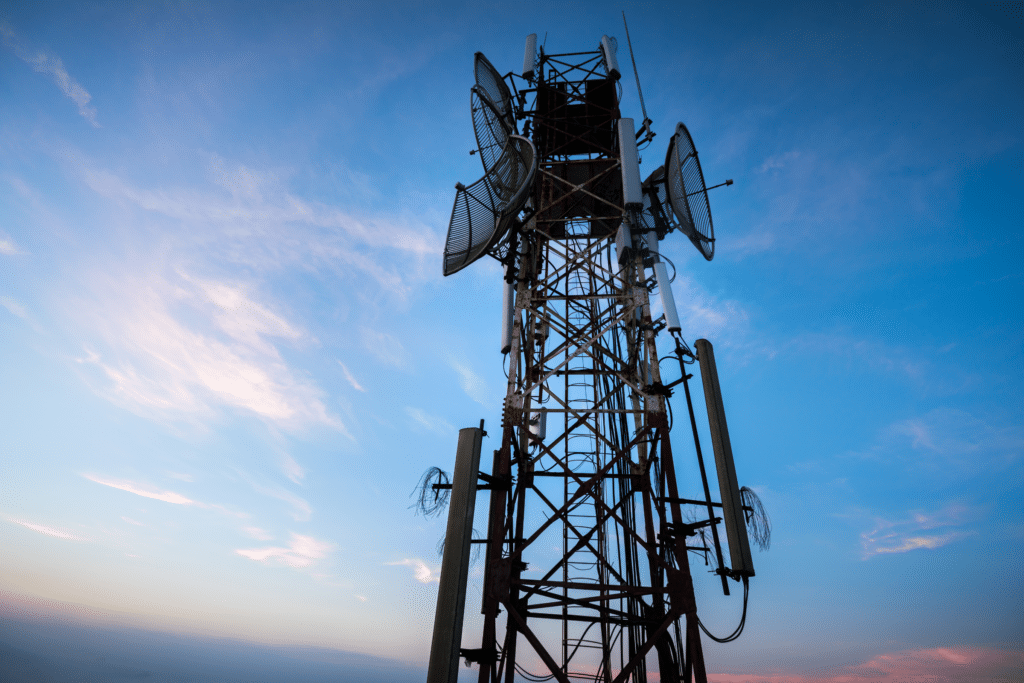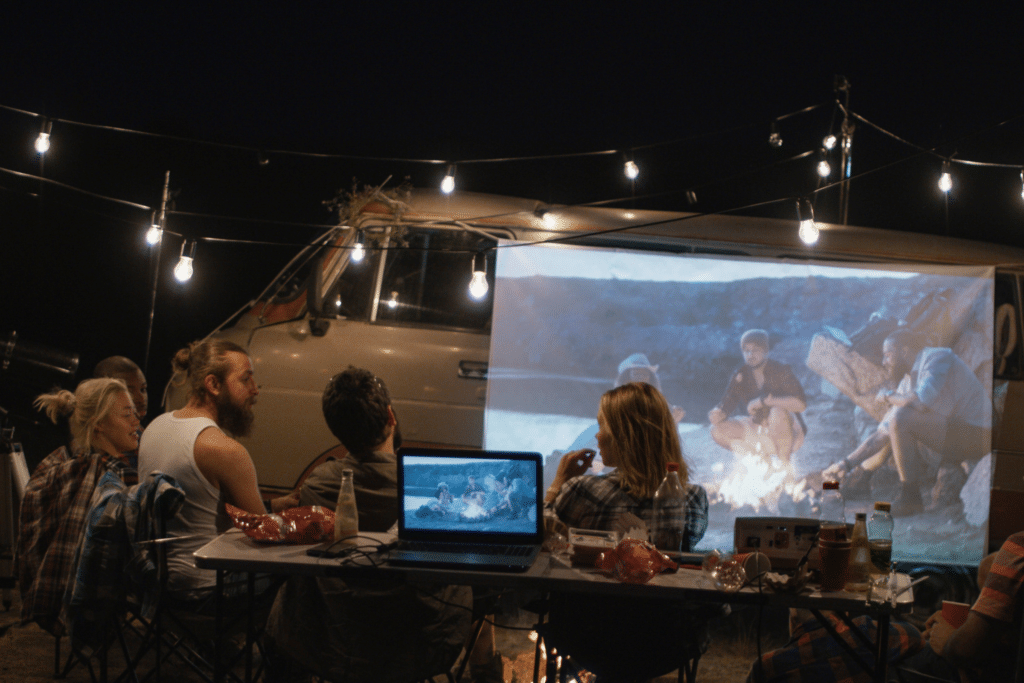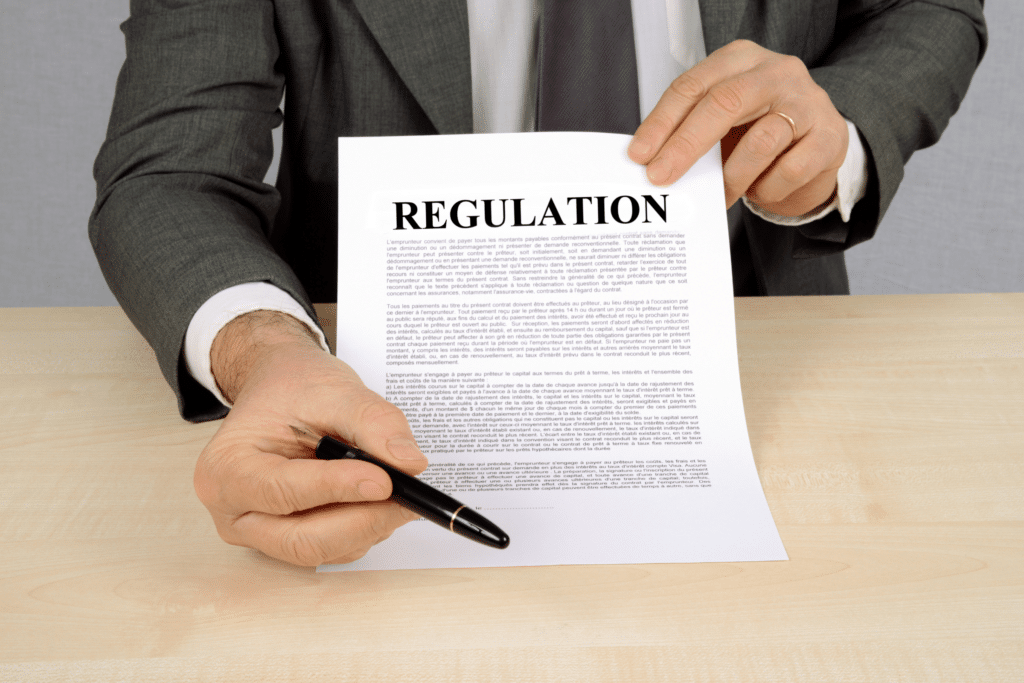While you can expect to see beer commercials across the airwaves, you would be hard-pressed to find one where any of the actors actually take a sip of alcohol. This custom has created the widespread belief that drinking in commercials is banned or even illegal.
No government regulations prevent advertisers from showing people drinking beer on television, although most producers avoid it. The traditional industry guidelines that recommend against showing alcohol consumption in commercials date back to the end of prohibition. Still, Congress has not enacted any laws to regulate the use of alcohol in the media.
Read on to learn more about alcohol use in TV and movies and advertisers’ guidelines when airing commercials for beer and other alcohol.
Topics We Cover
Can you show people drinking beer in a commercial?
Beer commercials have a long history, stretching back all the way back to the adoption of television sets into American homes. Back then, drinking on air was seen as a major faux pas for a nation recently emerging from prohibition, so many advertisers refused to show drinking in their commercials to avoid a moral backlash from viewers.
And in fact, this tradition has carried on to the present day: television agencies continue to advise advertisers against showing people drinking beer in commercials, but apart from banning outright fraud, there are almost no legal restrictions on what can and can’t be shown on television advertisements.
Agencies like the Beer Institute offer marketing codes that prohibit false or misleading advertising and call on advertisers to support:
- Responsible marketing communications
- Responsible alcohol consumption
- Health and Safety
- Protection of Minors
- Alcoholism Awareness
But at the end of the day, these codes are entirely voluntary. So while it might not go over well with the general public, there is really nothing stopping someone from airing a commercial that featured actors consuming alcohol on screen.

What does the FCC say about alcohol on TV?
The Federal Communications Commission has very little to say regarding alcohol use on TV. According to the agency’s website:
“Congress has not enacted any law prohibiting broadcast advertising of any kind of alcoholic beverage, and the FCC does not have a rule or policy regulating these advertisements.”
The Federal Trade Commission goes into further detail, explaining that the First Amendment’s protections for free speech limit the government’s ability to regulate alcohol advertisement. The US government has no legal authority over truthful advertising. The FTC has had to rely on the alcohol industry and advertising agencies to self-regulate.

Is it illegal to drink on live TV?
No laws are preventing private citizens from drinking on live TV. Still, just as with advertising, many television agencies show a lot of restraint when drinking on air because of their sensitivity to public perception.
These sensitivities haven’t stopped late-night hosts like Stephen Colbert from sharing a beer with guests during live broadcasts for adult audiences.

Can you show people drinking beer on television?
It is entirely legal to show people drinking beer on broadcast television. In fact, an estimated 53% of TV programming shows alcohol use.
Can you show people drinking beer in movies?
Movie producers are well within their rights to portray actors consuming alcohol in film. In fact, alcohol use is even more common in theaters than on television. According to research published in the Journal of Health Communication, 89.6% of films contained some form of alcohol use, and 62.6% of films specifically showed actors drinking beer.
What about movies rated G or PG?
The Motion Picture Association of America (MPAA) created our modern film rating system in 1968 to help viewers understand what kind of content to expect in a given film, specifically regarding language, nudity, sex, violence, or content that would offend parents for viewing by children.
Yet even though viewing alcohol use on-screen has been empirically linked to underage drinking, the MPAA rating guidelines do not consider alcohol use to be inappropriate content. On average, 32 seconds of G-rated movies and 122 seconds of PG movies highlight alcohol consumption on screen. So even though there is less alcohol consumption in G and PG movies than PG-13 or R-rated movies, the lack of specific guidelines means that producers are free to include alcohol use in movies for all audiences.

Do Advertising Regulations Work?
So if the US government relies on advertisement agencies to self-regulate, the question becomes: does self-regulation work?
Multiple peer-reviewed articles published between 2005 and 2013 show that alcohol advertisements regularly breach voluntary restrictions developed by advertising agencies. Depending on the study, anywhere from 35% to 100% of alcohol advertisements have been identified as breaking advertising codes. Common complaints include:
- Unrealistic advertising associating drinking with social success
- Content targeting underage drinkers
- Encouraging sexual activity
- Implied illegal activity
- Sexism and other offensive content
According to government analysis, 24% of alcohol advertisements were more likely to be seen by underage youth than adults of legal drinking age.

How can Self-Regulation be Improved?
Though the government has no authority to regulate advertising due to first amendment protections, there are a few ways that lawmakers and marketing agencies could work together to help encourage more consistent self-regulation.
Here are some proposals based on some successful regulation campaigns in other industries:
More Consistent Guidelines
Even though the government has no legal jurisdiction over advertisers, a set of consistent guidelines could help advertising agencies identify harmful content.
Positive Standards
The label “Organic” was historically unregulated until 1990 when the USDA defined the term to encourage sustainable food systems. There is plenty of room for similar seals of approval in the advertising industry, especially for potentially harmful products like alcohol.
Penalties for Code Violators
While marketing agencies have leaped forward to define advertising codes, they have done very little to actually enforce their recommendations. By developing penalties for rule-breakers, these organizations could legitimize their standards in the public eye.
Alcohol marketing is a complicated business, but it is clear that advertisers are willing to follow the industry when it comes to drinking beer in commercials. Since few brands are willing to challenge this seemingly innocuous tradition, there is clearly hope for the industry to enforce a ban on advertisements targeting children with or adults at risk for alcoholism.
For the web story version of this article click here!

